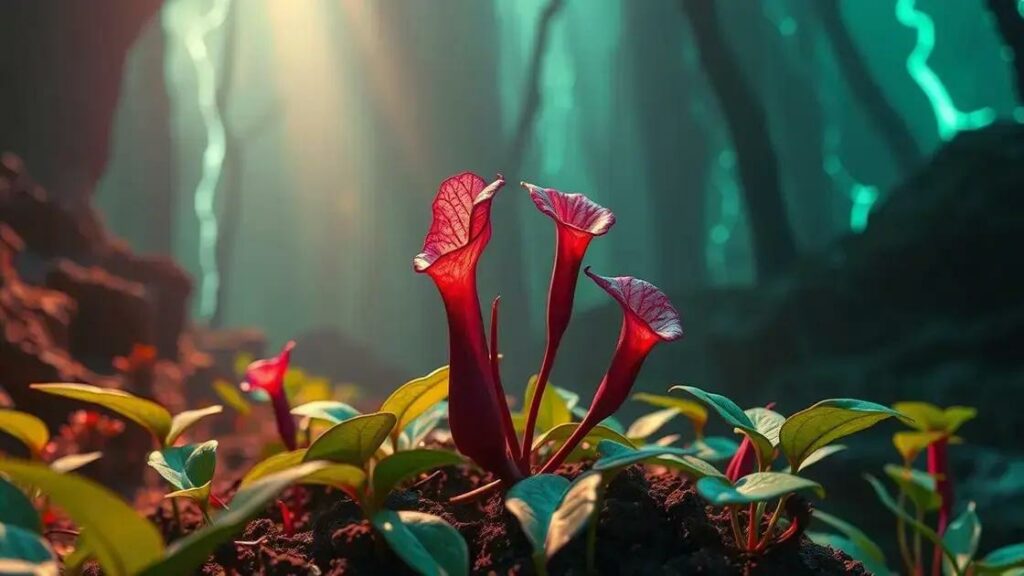How to take care of a pitcher plant involves understanding its unique needs to thrive. These fascinating carnivorous plants can be a stunning addition to your home or garden. With the right care, they not only survive but thrive, captivating anyone who loves unique plants. Let’s dive into the essential tips you need for success.
Table of Contents
ToggleEssential watering requirements for pitcher plants
Essential watering requirements for pitcher plants are crucial to their health and growth. These unique carnivorous plants thrive in specific moisture levels, which mimic their natural habitats. Understanding how to water your pitcher plants properly will help keep them looking vibrant and ensure they catch those pesky insects they crave.
Understanding the watering needs
Pitcher plants are native to wet, nutrient-poor environments that require just the right amount of moisture. Here are some essential watering tips:
- Water with distilled or rainwater: Regular tap water can contain minerals that are harmful to pitcher plants.
- Keep the soil moist: Like their natural habitat, pitcher plants prefer consistently damp soil.
- Avoid waterlogging: Ensure good drainage to prevent root rot.
Watering frequency
Watering frequency can vary based on the season and environmental conditions:
- Spring and summer: Water once a week, checking soil moisture frequently.
- Fall: Reduce watering as growth slows.
- Winter: Water once every two weeks or as needed, depending on humidity levels.
Signs of improper watering
Recognizing the signs of improper watering is key to keeping your pitcher plant healthy:
- Yellowing leaves: May indicate overwatering or poor drainage.
- Dry, crispy edges: This could be a sign of underwatering.
- Rotting bases: A clear sign of too much moisture.
Conclusion
By following these essential watering requirements for pitcher plants, you can create a thriving environment that promotes their natural beauty and insect-catching abilities. For more about caring for your carnivorous plants, consider exploring indoor gardening techniques.
Ideal soil composition for your pitcher plant care

The ideal soil composition for your pitcher plant care is essential for their health and vitality. These unique carnivorous plants thrive in specific substrates that mimic their natural habitats. By choosing the right soil mix, you can ensure your pitcher plants grow robustly and effectively capture insects.
Understanding the soil needs of pitcher plants
Pitcther plants require a nutrient-poor soil that retains moisture without becoming waterlogged. Here are the essential components for your soil mix:
- Sphagnum moss: Provides aeration and moisture retention.
- Perlite: Enhances drainage, ensuring the roots don’t sit in water.
- Sand: Aids in drainage and adds texture to the mix.
Creating the perfect potting mix
To achieve the best results for your pitcher plants, consider the following potting mix ratio:
- 2 parts sphagnum moss
- 1 part perlite
- 1 part coarse sand
Mix these components well to create an ideal environment for your plants.
Common soil-related issues
Identifying soil problems early can help you take corrective action:
- Compacted soil: Leads to poor drainage and root health. Fluff it up with additional perlite.
- Excessive nutrients: Water your plants with distilled or rainwater to leach out any built-up nutrients.
Conclusion
Providing the ideal soil composition for your pitcher plants is one of the keys to successful care. For more guidance on caring for your carnivorous plants, consider exploring indoor gardening techniques.
Optimal light conditions for growing pitcher plants
Optimal light conditions for growing pitcher plants are essential for their overall health and vitality. These unique carnivorous plants have specific light requirements that mimic their native habitats, often found in sunny, humid environments. Providing the right light settings will enhance their growth and aid in their insect-catching abilities.
Understanding light needs of pitcher plants
Pitcher plants thrive best under certain lighting conditions. Here’s what you need to know:
- Bright, indirect sunlight: Place them near a window with filtered light.
- Partial shade: Too much direct sunlight can cause leaf burn.
- Artificial lighting: For indoor growth, use grow lights for 12-16 hours a day.
How to provide optimal light
Here are tips to ensure your pitcher plants receive the right amount of light:
- Position near east or west-facing windows for morning light.
- Monitor leaves for signs of too much sunlight, such as browning or scorching.
- Use a light meter to check lux levels; pitcher plants prefer 1000-1500 lux.
Common lighting mistakes
Avoid these common pitfalls when providing light:
- Neglecting seasonal changes: Adjust positioning during changing seasons for consistent light.
- Using regular bulbs: Avoid using standard bulbs; opt for full-spectrum grow lights.
Conclusion
By understanding and providing optimal light conditions for growing pitcher plants, you set the stage for successful horticulture. For additional tips on caring for your carnivorous plants, consider exploring indoor gardening techniques.
In conclusion
Caring for pitcher plants requires a thorough understanding of their specific needs, from optimal watering and soil composition to suitable light conditions. By following the essential tips outlined in this guide, you can create a thriving environment for your pitcher plants. Remember, these unique carnivorous plants offer not just beauty but also fascinating insights into nature’s adaptations. For further insights and tips on enhancing your indoor garden, explore various online communities and resources.

